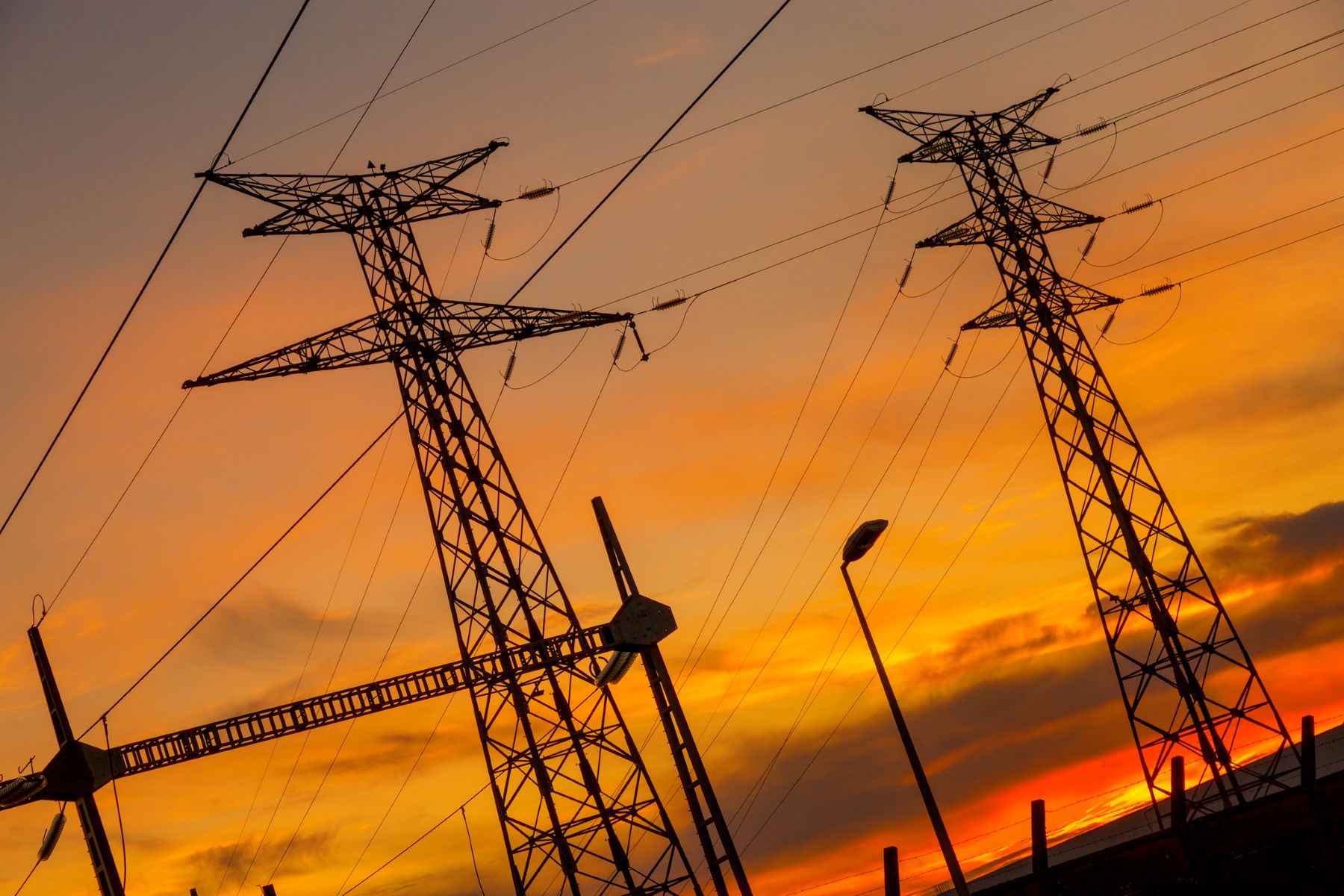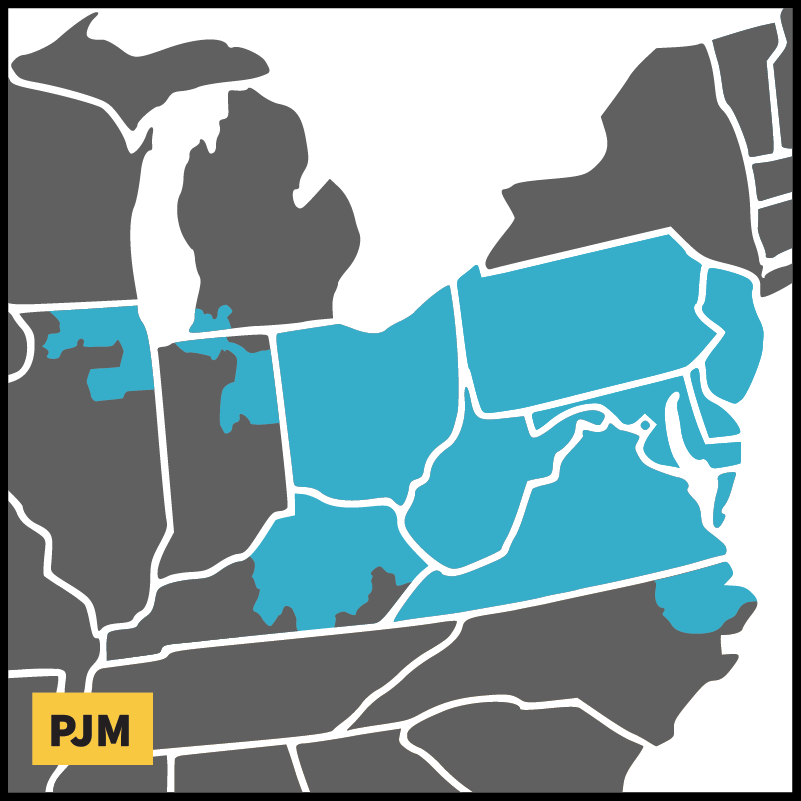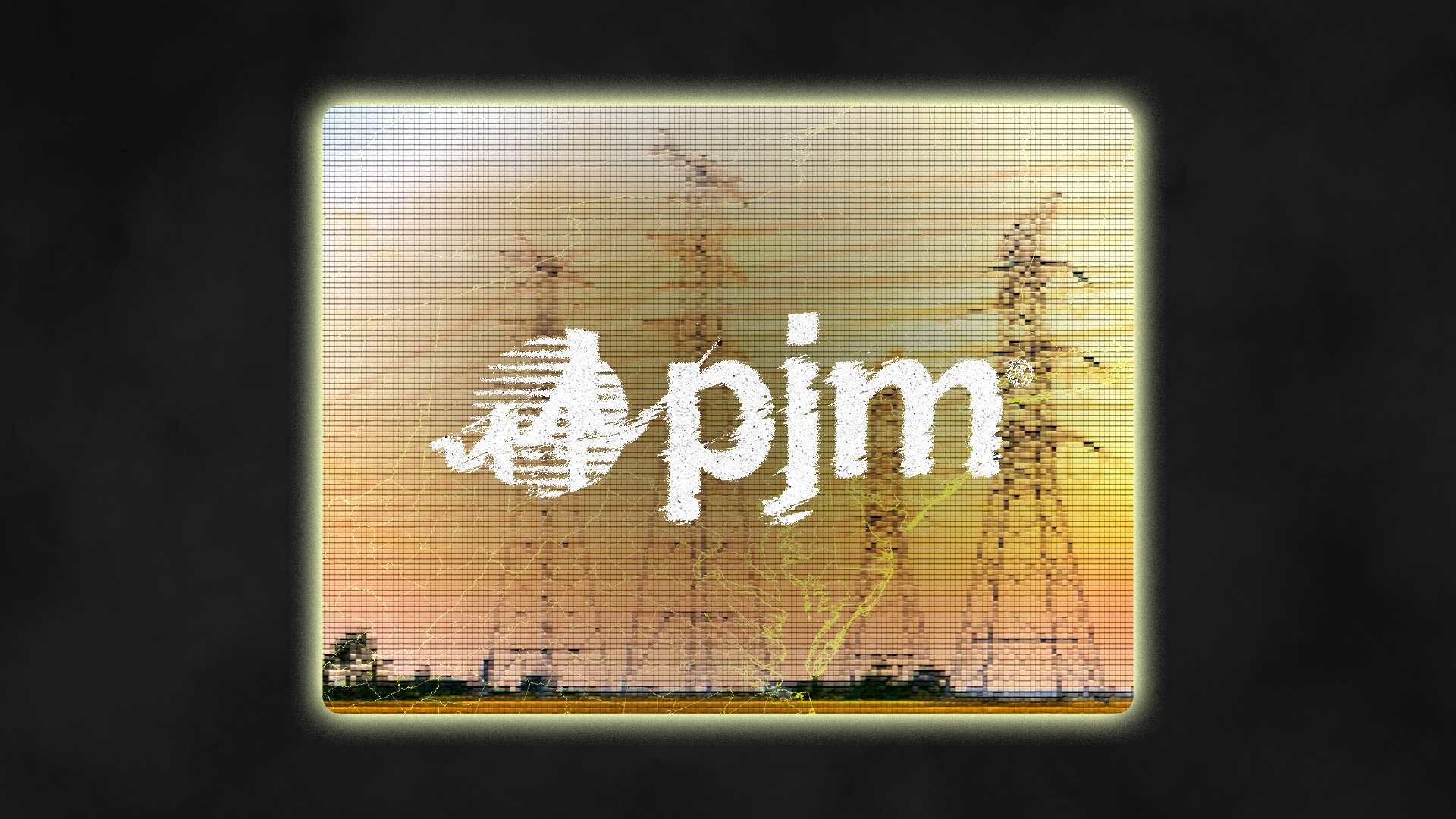What Is Behind PJM’s Price Hikes?: Three Factors
Like last year, high prices in this year's energy auction were largely because of an imbalance in supply and demand. The country as a whole is experiencing an increase in energy demand driven by data center development. But unlike in other regions, PJM has been uniquely bad at connecting new supply to meet this demand (PDF). Thousands of energy projects, 95 percent of which are clean energy, have been waiting for five years on average for PJM’s permission to connect to the grid. This mismanagement leads directly to higher prices.
1. PJM Is Slow to Connect Energy to the Grid
PJM significantly lags behind other grid operators, having both the nation's longest waitlist of new energy projects waiting to get online and the longest approval time. About 2,000 projects have been waiting for years in the queue to connect to the PJM grid and bring down auction prices. PJM has the slowest interconnection process of any grid operator in the country, with the average project waiting over five years just to get the go-ahead from PJM to start construction.
2. PJM Is Prioritizing Unreliable, Dirty Fossil Fuels
Rather than reforming a slow queue process, PJM has focused on letting fossil fuels cut to the front of the line. PJM’s Reliability Resource Initiative (RRI) provides a fast-track approval process for some energy projects, but PJM chose to primarily fast-track gas projects over renewables and storage. Worse still, most of these gas projects will not come online until at least the end of the decade, so they will do little to address our current supply and affordability issues. PJM’s RRI program shows it has the ability to review projects more quickly. PJM is choosing to sideline the clean energy and storage projects that could bring prices down more quickly and meet rising demand.
3. PJM Is Prioritizing Member Profits Over Its Consumers
The interconnection queue has a big impact on consumer costs. A recent study by Synapse Energy Economics found that reforming PJM’s broken interconnection queue process would result in household savings of $500 a year. But why are reforms being slow-walked? It seems that the status quo is benefiting PJM’s members too well: Its fossil fuel and utility members are making record profits off the lack of competition, and customers are paying more for less.
Were There Any Silver Linings to the Capacity Auction?
Over 2 GW of renewables were added to the grid since last year’s auction. While that is a small number compared to the hundreds of gigawatts waiting for approval in the interconnection queue, this critical addition helped PJM reach its reserve margin to prevent blackouts. Still, these low-cost renewable sources remain only a fraction of the mix—just four percent of PJM’s supply.
4 Actions PJM Must Take Next
PJM is at a crossroads when it comes to affordably meeting today and tomorrow’s energy demands and must make several reforms. Governors (PDF), consumers (PDF), industry (PDF), and advocates (PDF) are fed up with the status quo. It’s time for PJM to take responsibility and assert the leadership it once held as the first grid operator. Here are four areas PJM can focus on for reform.
1. Interconnection Queue Reform
PJM has made some interconnection reforms, but a faster interconnection process is still needed. Getting new, affordable power projects connected to the grid quickly will help meet urgent energy needs and keep electricity bills down over time. PJM can do this by:
- Fully complying with the interconnection reforms required by FERC Order No. 2023. This includes resubmitting a robust compliance filing in line with FERC’s July 24, 2025 decision that fully implements Order 2023.
- Implementing further reforms, such as developing fair, fast-track processes for energy-only resources and accelerating the implementation of automated interconnection studies
2. Robust Transmission Planning
The PJM region continues to face a lack of adequate transmission infrastructure and transmission planning in the region. Since PJM is not building out the grid proactively to meet rising demand, proposed energy projects are forced to pay the costs of any grid upgrades needed to handle the additional electricity.
This increases costs for resources in the interconnection queue and contributes to a large percentage of proposed projects never getting built. PJM will never fully fix its cost crisis unless it fully complies with FERC Order No. 1920 and implements robust long-term transmission planning.
3. Capacity Market Reform
The market for electricity must change to better value renewable and advanced energy sources, including some which are more available seasonally. PJM needs to quickly adopt a seasonal capacity market and remove obstacles to importing power from outside its region.
4. Data Center Management
Data centers and other massive electricity users are creating two big problems: They strain our power supply and drive up prices for everyone. While PJM’s recent proposal to standardize load forecasting processes shows that it’s trying to better predict the actual power needs of proposed data centers, PJM needs to do more.
It must also create an interconnection queue for large energy users, with standardized, transparent, and rigorous load forecasting, and with wider grid costs paid by these projects instead of the general public.
What Can State Leadership Do to Help?
States must also come to the table with solutions. States must work to streamline projects and technologies that would prevent future rate hikes. State legislatures can streamline siting and permitting (PDF) for clean energy and transmission projects so that energy can be added to the grid more quickly. They can also require utilities to deploy grid-enhancing technologies and virtual power plants that get more capacity out of the existing transmission grid and demand-side resources.
The bottom line is PJM’s historically high prices are unacceptable. We need to add more energy to the grid as quickly as possible to bring down prices and meet demand. Clean energy is the fastest and cheapest way to add energy to the grid. With federal clean energy tax credits phasing down in the next few years, the urgency is even higher to expedite clean energy deployment now. PJM needs to stop standing in the way of low-cost clean energy. Millions of consumers can’t afford to wait.






